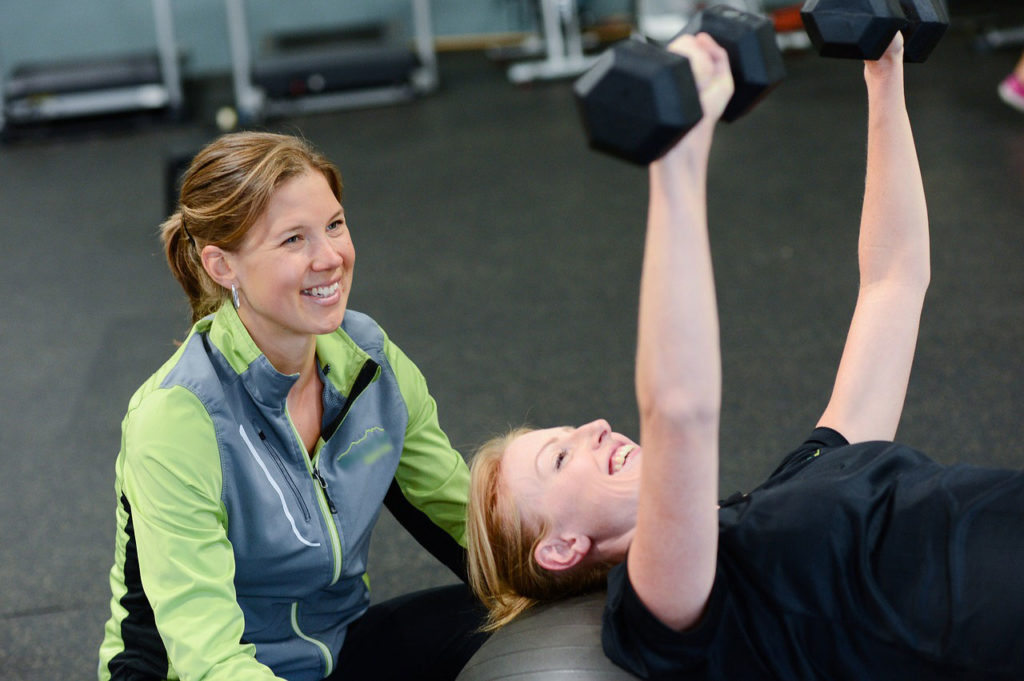To find the best gym, choose one that best fits your needs. If cardio equipment is a necessity for you, strike gyms without that equipment off your shortlist. You might like the environment of a women’s gym You must also make sure to check the reviews left by previous customers on social media or other websites.
This can help you determine whether a gym is the right fit for you or not. If eventually, a gym doesn’t suit your needs, you might need private training sessions.
How Much Does a Personal Trainer Cost in Houston?
The regular price range of a trainer is $50 to $100 per session, but this price can quickly rise depending on your needs. For instance, a Pilates session will cost more than regular aerobics.
How Often Should You See a Personal Trainer?
Upon assessing your physical conditions and needs, a trainer will often make a recommendation of the number of sessions required. However, be wary of unscrupulous trainers who might want to rip you off.
Is a 30-Minute Personal Training Session Enough?
The length of your sessions is entirely dependent on what you want to achieve. Are you interested in building muscle mass and burning excess fat, or are you an active athlete? These are two different goals that require entirely different approaches.
A professional athlete will need a longer and more consistent regimen tailored toward their sport, while weight-loss regimens are usually less intense. Thirty minutes of physical activity every day is recommended.
Is It Worth Getting a Personal Trainer?
The two paths most people consider when trying to get fit are joining a gym and getting a personal trainer. Joining a gym has its benefits, mainly a wider selection of equipment, and the crowd setting helps people of certain personality types. A personal trainer, however, will make you more accountable.
Lack of consistency is probably the number one reason most people fail to reach their workout goals. A personal trainer will help you reach your goals and keep things interesting and fun.
What Are the 10 Best Exercises?
When joining the fitness lifestyle, it is easy to get overwhelmed by all the information and options available. Regular exercise is good for your health, but sometimes choosing the exercise can prove difficult. To work out the whole body effectively, a combination of exercises is necessary.
Avoid the temptation to copy what you see on Instagram or at the gym. Start with basic exercises and work yourself up to advanced levels. Here are good exercises you can do on your own without getting injured.
Sit-ups
Sit-ups are an effective way of building your abdominal muscles. They involve lying on your back with your knees bent, feet flat and hands behind your head. You then roll up from your head, with your feet glued to the ground, engaging your core throughout. A few sets of 15 should be enough for beginners.
Single-leg deadlifts
This exercise helps you get balanced since they require leg strength and a good sense of stability. You need to use a dumbbell for this exercise to be effective. Make sure to switch legs after every set of reps to have a balanced workout.
Squats
Squats are popular and for good reason. They build core strength and flexibility. Squats engage your lower back and hips, which are some of the biggest muscles in your body. A lot of calories are burnt, so if you’re looking to lose weight, squats should be right up your alley.
Push-ups
Push-ups are a gym workout staple. A lot of muscles are recruited to perform one push-up, making it a good weight-loss exercise. For beginners, push-ups can be the stuff of nightmares, but as you get fitter, they get quite enjoyable.
Lunges
As with single-leg deadlifts, lunges challenge you to stay balanced and build leg strength and glute muscles. Make sure to do an equal number of reps for both legs for a well-rounded workout.
Pike rollout
Pike rollout combinations are effective for core muscle workout. You need a stability ball (exercise ball) and get up to a push-up position with your feet on top of the ball. You begin by using your core to lift your butt into the air, the pike position. You then bring your body back down below your knees. Get it right, and almost all core muscles will be well exercised.
Burpees
Burpees get a bad rep for being rather silly, but they work. It’s a sort of push-up and squat hybrid, and if you’re feeling daring, try it with a dumbbell in each hand.
Deadlift
A deadlift is an old-school routine that builds full-body strength. Done right, it will strengthen your back, hamstrings, quads, forearms, and core. Get it wrong, however, and you might get a back injury. If you’re unsure or it’s your first time, ask an instructor for help.
Standing overhead dumbbell presses
For beginners, 10-pound dumbbells are recommended. This exercise engages your upper body and core. Standing overhead press works several parts of your body at once, saving time for other activities.
Dumbbell rows
As with standing overhead presses, start with a 10-pound dumbbell in each hand. Rows build your back and are good for weight-loss regimes.
What Are the Basic Exercises?
There are thousands of exercises you can try, but often the basics will be all you need. Some of these exercises get a bad rep (pun intended) for being too basic but are effective. Regardless of your fitness goals, these basic exercises will get you well on your way:
- push-ups
- sit-ups
- burpees
- squats
They carry a low risk of injury and are easy to master. Keep in mind that small bouts of activity are easier and better than knockout workouts that will be difficult to replicate.
Why is Exercising Good for you?
You probably already know that exercise is good for you, but what you may not know, is exactly why or how. Some of the best-documented advantages include:
- Better weight management
- Better mood and relaxed state of mind
- Stronger bones, muscles, and joints, lowering the risk of lifestyle diseases
- Better sleep, attributed to the healthier state of mind brought by exercise
Ultimately, what you plan to achieve dictates everything about your fitness regimen. A daily walk may be enough for some, squats and push-ups for others, and all-out Pilates, Aquafit, and aerobics regimen may be necessary for a small percentage of people.




